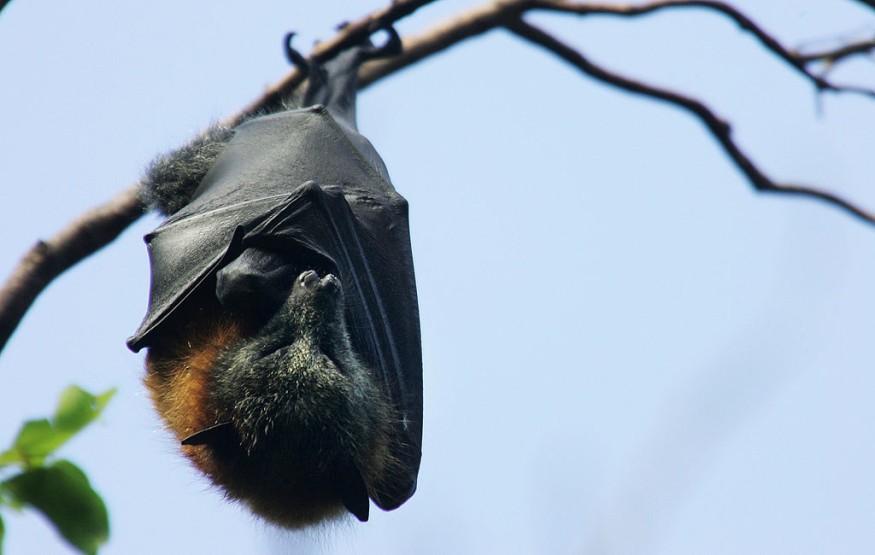
A French guy has died of a rare infection of viral rabies. This is the first event of its type in France, says the Pasteur Institute.
At Limoges, the sexagenarian had fallen to encephalitis, a brain disease of unexplained roots.
The genetic study of post-mortem samples has contributed to a collaboration between the Parisian Necker Hospital and the Institut Pasteur to discover undocumented encephalitis causes. These tests revealed that he had acquired a bat-hosted lyssavirus, the European Bat Lyssavirus type 1 (EBLV-1).
In Touch With the Bats That Were Nesting in His Attic
It has been 35 years since the planet has witnessed the death of this kind. According to Laurent Dacheux, this situation is also the first case in mainland France.
He claimed that there was a similar death in Russia in 1985. Two other fatalities involving chiropterologists involving another bat lyssavirus species, EBLV-2, were recorded in Finland in 1985 and one in Scotland in 2002,' he added. The patient who passed away in Limoges, Dacheux estimated, was apparently in touch with bats nesting in his attic.
The researcher points out that in France, rabies has been formally eradicated since 2001. "The last case concerning non-flying animals referred to in France dates back to 1998."
Experts Claim There Are Instances of Rabies We May Skip
Experts brought this situation to light due to this retrospective diagnosis. The recent incident shows that almost everyone could overlook rabies cases, explained Laurent Dacheux, deputy head of the Institut Pasteur's national reference center for rabies.
At the moment, in November 2020, a residue of this virus was found. Laurent Dacheux said this finding went unnoticed. Finally, this exceptional case was listed in a popular science post on mesvaccins.net and illustrated by the area daily newspaper The People of the Center.
What's Rabies, Then?
Rabies is a disorder triggered by a virus that is rare but severe. The nerves and brain are impaired.
An infected animal normally spreads the infection by a scratch or bite. If the bitten individual receives care soon, rabies may be avoided. It is almost always lethal if an individual isn't monitored and gets rabies.
What Are Rabies' Signs & Symptoms?
From a few days to over a year after the bite occurred, the first signs of rabies will develop.
There's a tingling, prickling, or scratching sensation across the bite region at first. Flu-like symptoms such as fever, fatigue, body aches, lack of appetite, nausea, and tiredness can also be present in a person.
Neurological signs progress within a couple of days, including:
- Aggressiveness or irritability
- Excessive or agitated gestures
- Confusion, irregular or weird feelings, or hallucinations
- Unusual postures and muscle spasms
- Convulsions (convulsions)
- Paralysis or weakness (when a person cannot move some part of the body)
- Severe exposure to or touching flashing lighting, noises
Those with rabies might find it difficult to swallow due to muscle spasms and emit too much saliva. This causes the "foaming at the mouth" effect that has long been associated with rabies infection. The established indication of rabies often leads to the fear of swallowing or what sounds like a "fear of water."
Is rabies infectious?
From individual to individual, rabies is not infectious. The virus more commonly spreads from an infected animal thru bites. However, it may also spread if the saliva (spit) of an animal gets directly through the eyes, nose, mouth, or an open wound of a human (such as a scratch or a scrape).
How to Diagnose Rabies?
If an animal gets rabies, there is no way to determine straight away. Doctors should not hesitate for referral whether a human is attacked by or subjected to an organism that might be ill. Chemical testing will screen for bacteria, but later in the condition, the findings come in as it would be too late to handle.
Experts may check a trapped biting animal to see if the infection is in its brain, but it must first be euthanized (put to sleep). Experts suggest monitoring the animal for 10 days whether it's a safe pet, such as a dog, cat, or ferret, to see whether it gets ill. A veterinarian will consult with the local health department to determine what to do, whether it is a rabbit, mouse, or other small animal that may not typically transmit rabies.
ALSO READ : How Binge Drinking Affects Your Brain Activity
Check out more news and information on Medicine and Health on Science Times.
© 2025 ScienceTimes.com All rights reserved. Do not reproduce without permission. The window to the world of Science Times.












